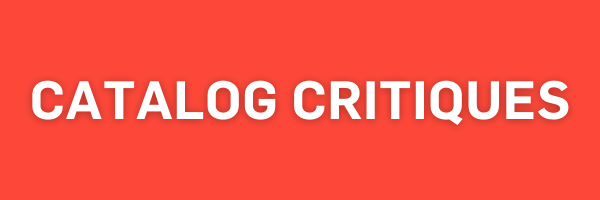MoMA: From Studio to Catalog

Somewhere just south of Central Park comes a catalog you might not know existed, but that you’ve certainly heard the name of. A catalog built on design, on art, and most importantly on bringing their principles to the world.
The Museum of Modern Art (MoMA), striking yet inconspicuous, sits between Fifth and Sixth Avenue on 53rd Street in Manhattan. Since the opening of its doors in 1929, it has been a cultural nucleus of contemporary art, architecture, and design. Every year millions of visitors walk through its halls to view the iconic works of Van Gogh, Picasso, Warhol, Monet, and they each pass by the MoMA Design Store as they head back towards the busy streets of downtown New York City.
What started with the expected postcard reproductions of famous prints, key chains, and coffee table books, grew into a high-end powerhouse of furniture, tableware, jewelry, electronics and much more, united by one principle: excellent design.
The scope of the MoMA Design Store stretches much farther than Manhattan however. Today their catalog reaches thousands of homes, extending a sense of polish, sophistication, and perhaps most importantly, inspiration, through mailboxes everywhere. Let’s look together at their Fall/Winter 21’ catalog to find some things they are doing superbly, where they might be able to do better, and if they are following the J. Schmid credo to Disrupt, Delight, and Drive.
Three Things the MoMA Design Store Is Doing Well:
1) Mastery of Minimalism
If you have ever been inside the MoMA, a quick glance through the pages of their Lookbook will take you right back. Clean lines, elegant use of negative space, and a stunning dedication to minimalism that lets the displayed work shine without a single distraction. All of the same design principles that govern their museum are at play in their book, providing a satisfying cohesion across the brand that works as well in print as it does in person.
Their photography is beautifully done, more often than not singularly showcasing the product itself, without relying on the benefits of lifestyle-focused presentation. The images are situated together on the page in balanced simplicity that allows the eye to wander unincumbered, at its own pace, as if in a museum of one. Around the product images the gallery similarities continue. As is expected, each item coordinates to a description, sku number, and price, but that’s where the predictability ends. From font to visual arrangement the product descriptions remind the reader (yep, you guessed it), of the exhibition labels that accompany each piece in galleries and museums. All of these visual elements work together in harmony to create a catalog that disrupts with the first page, and delights with every other.
2) It’s In the Family
It’s only fitting that a book from a renowned art museum would contain not only a great typeface, but one they had designed just for them. In the past, MoMA has used a variety of sans serif fonts across their wide-reaching mediums, but in recent years they realized it was time for a change.
They needed something beautiful, but not distracting, something versatile, but still impactful; a family to cover their full range of typographic needs, including exhibition graphics, print materials, mobile apps, websites, and of course their catalog. With the help of their in-house team and type-designer Christian Schwartz, “MoMA Sans” was born.
Built on the bones of American Gothic typefaces, this new family takes the underlying structures and some significant details from the genre. You will recognize familiar angled stroke terminals, distinctive forms of “g” and “a”, as well as a measure of stroke contrast, all re-worked and re-thought to be clean, quiet, and readable regardless of location or purpose.
From their headlines to the product descriptions ‘MoMA Sans’ does exactly what it is intended to do. It plays a secondary role to the art and products it accompanies, informing the viewer without distracting them with visual tricks or busy details. It is pleasant to read on the page in any type size. It invites you along, suggests a closer reading of that product description you were eyeing, and makes it easy to turn the page for another series, another story, another exhibition.
3) Exclusivity and Provenance
In a book so committed to a minimalist disposition, you might be concerned they would let their product details suffer, relying on web-pushes to find more information. Thankfully this supposition proves to be wrong. And why are descriptions so important to this catalog in particular? In one word – provenance.
Every single item the store sells has been individually vetted by the museums’ curators. Each season, the Design Store’s team of buyers scouts the corners of the world. They visit exhibitions, crowdfunding conglomerates, workshops dusty with ceramic fragments, and studios fragrant with turpentine. Every product they pitch from abstract lighting fixtures to inflatable sailboats has to do one central thing, support the mission of the MoMA Design Store: to make good design available to as many people as possible and to expose the public to objects and ideas they didn’t know existed.
Each product description in their catalog begins by directly stating the artist and year of exhibition in the MoMA it was inspired by, or identifies it as an exclusive product that has been carefully chosen to take its deserved place alongside other works of chic design. As you read through the rest of the descriptions you’ll learn more details about the inspiration, the materials, crafting methods, and of course the physical dimensions. So, you can be sure that the “Osamu Mita Throw” will fit over your divan exquisitely.
Three Things the MoMA Design Store Could Be Doing Better:
1) Where Are We Again?
If a catalog is willing to take risks and look at the role of direct mail with a new perspective, an argument can be made that of the three D’s (Delight, Disrupt, Drive), delighting is the easiest step to accomplish, and MoMA certainly delights.
However, upon flipping through this weighty 87-page Lookbook there is one glaring incongruity that begins to stand out. It can be hard to tell just what product category you are in at a given moment. Besides the table of contents on page three, each genre of product is demarcated a single time, at the beginning of the section, with a relatively small headline in the top left-hand corner. For the series of products on this given page this makes perfect sense, but consider “Kitchen & Dining” which begins on page 18 and continues until the beginning of “Home Organization” on page 28, an arguably similar category with arguably similar products.
A reader may glance at the various items under Home Organization and forget they are no longer in Kitchen & Dining, mistaking the beautiful “Dusen Dusen Bathroom Towels” as colorful kitchen towels to hang over the oven handle. In addition to the potential category confusion, there is also the problem of the copy blocks on the outside right column; they look good, but that premium real estate should be dedicated to a powerful product image with stopping power rather than small type details. Of course, this isn’t the end of the world, but it is a potential moment of confusion, and a single moment of uncertainty in the ordering process can result in a lost order, or even a lost customer.
While I don’t advocate for anything that might harm the minimalist aesthetic of the overall piece, I do think there is room for a touch more visual distinction between categories. The reader should feel as if they are in a museum, but they have to know where the exhibition they came to see can be found.
2) We Need a Hero
A key strength of this catalog is of course the products it contains. They are striking, well-designed, curated, and made to be beautiful whether crafted to live on your desk or in your bathroom. The vast majority of items are colorful and as such, need little help from overly designed photographic layouts and orchestration. After a few pages though, a reader might find themselves craving the occasional step outside the repetitive dedication to egalitarianism in each and every product spread.
Because every product is attractive, I want to see layout variation with the occasional blown-up hero image (large, central graphic). Yes, it will come at the disservice to the size, or even presence of one or two products, but I argue the payoff will be worth it. Each item is so carefully chosen to be the epitome of good design that if given the breathing room to take up half, or even three-quarters of a page, in a few, carefully chosen spots it can singlehandedly solidify the guarantee of quality and craftsmanship the reader should expect from the MoMA Design Store.
Let the internal statistics of the book drive this decision; choose a best-seller, or an item that you think can become one. Keep it simple, minimal, but let the occasional product be the hero it deserves to be.
3) Tell Me a Story
The MoMA, and as such the MoMA Design Store, does not exist within a vacuum. Even if you’ve never visited the halls of the museum, seen one of their books, or are not even particularly interested in art, it’s likely you have at least heard the name. That’s the kind of social capital they bring to the world of catalogs.
When it comes to the Design Store, I worry that the grandiosity of their legacy has blinded them to the opportunity to tell a captivating and democratic story that would ring true for just about everyone.
Their opening spread provides a small blurb about new additions to this season’s book, you’ll find a table of contents giving an idea of what kinds of products to expect, but nowhere throughout its entirety do you find their history, their purpose, or perhaps most surprisingly, their mission. You remember it from earlier, right? “To make good design available to as many people as possible and to expose the public to objects and ideas they didn’t know existed.”
If I was asked to write a mission statement of substance, that most human beings could find honorable, worthy, and valuable, I’m not sure if I could do better than the MoMA Design Store. Tell your readers that story, give them your history, contrary to popular assumption we rarely purchase from a brand (especially one like MoMA) for savings or availability, we purchase on a fundamental emotional level. We want to shop with someone we know, with someone we trust, and with someone who makes us feel like a part of something bigger. Tell me that story.
The MoMA Design Store makes a phenomenal catalog. Its visual design instantly disrupts, the provenance and products delight, and you can’t help but want to bring a piece of this beautiful world into your home, so it must drive as well. Whether to remind you of your first visit or a trip you may never get to take, flipping through its pages will transport you to the still ambiance and quiet admiration of beauty that lives and breathes throughout each hallway and corridor of the Museum of Modern Art.
Looking to improve your own catalog, or just talk about the importance of storytelling in your book? Reach out to Devon at devonc@jschmid.com.
Read More Catalog Critiques:
Tags: branding, catalog design, Customer Experience, marketing, Strategy








